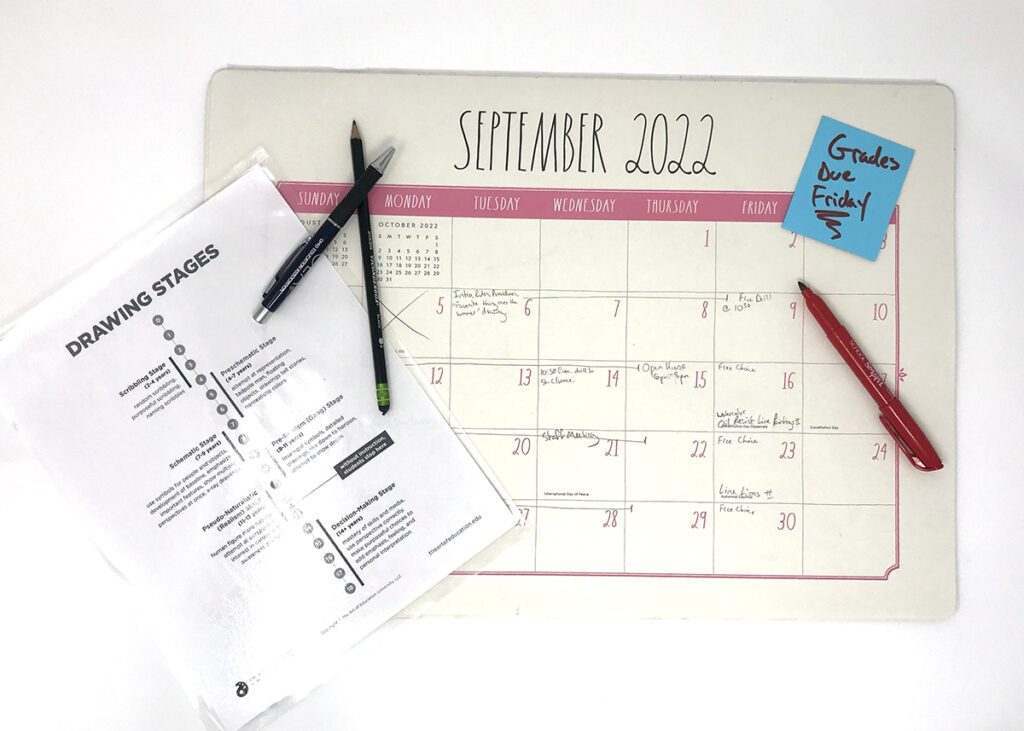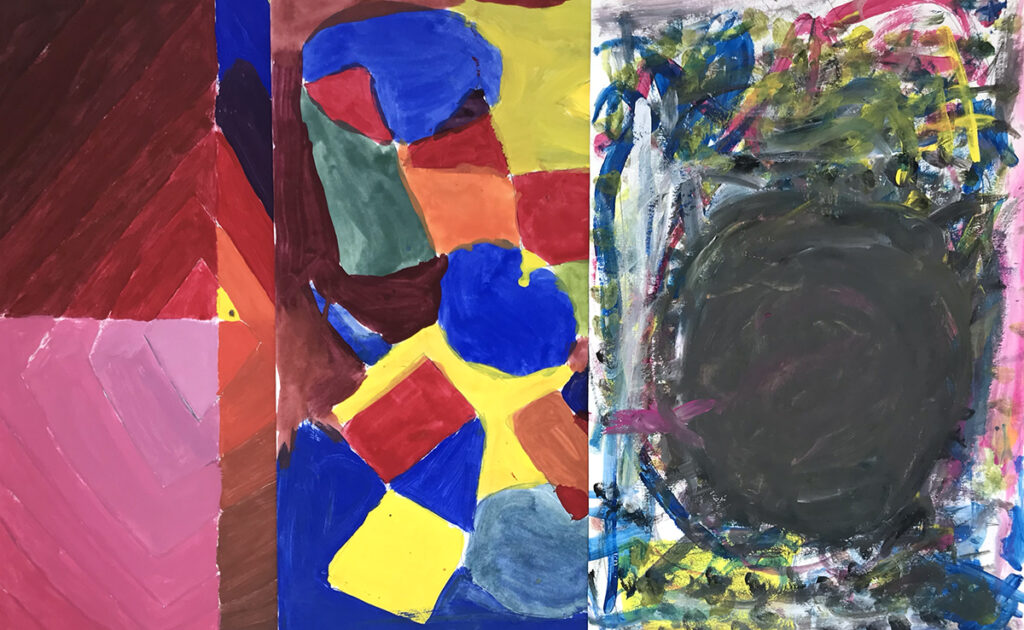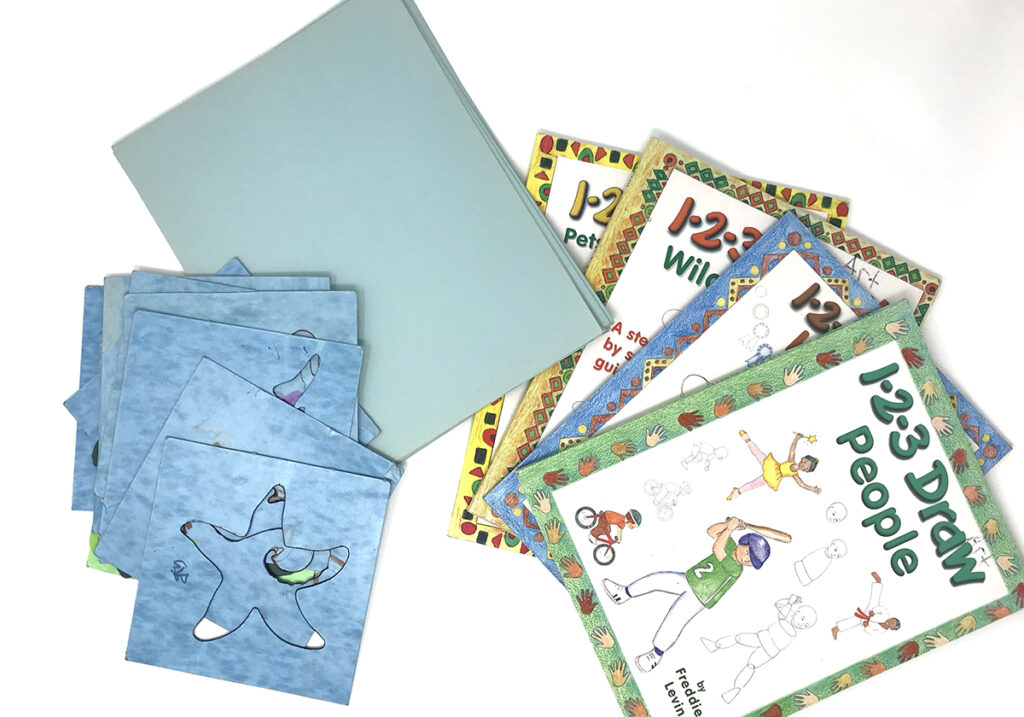As a professional artist, it may be tricky to determine when a piece of artwork is finished. You can spend days, months, or even years perfecting a work of art. But, as art educators who work with little artists, spending years on one project is not an option, especially if you would like to cover multiple techniques or subjects.
Many factors contribute to the length of a project, especially in the wake of COVID-19 and technology use. Students increased their tech time and decreased their physical activity. This has led to a noticeable change in attention span as well as motivation. A call to educators everywhere has been made to get students more physically active and emotionally and mentally stable and regulated. This means art can save the day! It is well-researched that artmaking has many physiological, mental, and social benefits. Art can lower blood pressure, decrease stress, promote brain development, and provide a sense of social togetherness.
All that being said, how do we deliver a lesson to our students in a timely manner that gives ample time for exploration and experimentation and is rigorous with enough content to “chew” on? How do we balance that with a lesson that doesn’t drag out and result in boredom and a loss of interest? The solution is to keep the following things in mind: the developmental age of your students, the type of project you are creating, your schedule, and any looming deadlines.
Let’s look at four key areas to consider when determining the length of a project.

1. Age and Development
The first major thing to consider is to know the developmental age of your students. Referencing Viktor Lowenfeld’s Stages of Creative Development is probably one of the best things you can use! Generally speaking, the younger the student, the shorter the time frame should be for a project. For example, students in the Scribble Stage may finish a project in 20 minutes and need another activity to do afterward. On the other hand, a student in the Pseudo-Realism Stage may need several days to finish a piece due to the level of detail and technique they need to pursue their artistic goals and meet the lesson’s objectives.
Here are the stages at a glance:
- Scribble Stage (ages 2–4)
- Preschematic Stage (ages 4–7)
- Schematic Stage (ages 7–9)
- Pre-Realism Stage (ages 9–11)
- Pseudo-Realism Stage (ages 11–13)
- Decision-Making Stage (ages 14 and up)
2. Type of Project
Once the developmental age of your students has been determined, think about the type of project students will create. Consider sitting down and making the project yourself first to determine the troublespots and the best approach for the lesson. Keep track of how long it takes you to finish an example. Keeping your students’ developmental age in mind, you can make the call on how long the project should take. This is a bit like backward design for lesson planning.
For example, if it took you 30 minutes as a professional artist to make a painting, a third grader in the Schematic Stage may need at least 60 minutes. Factor in getting students seated, teaching the lesson, handing out supplies, and cleaning up at the end of the period, and you may be looking at needing 90–120 minutes. If you are new to teaching, this can take some finesse and trial and error. But once you get the ball rolling and execute this design process a few times, predicting the timing of a new lesson will come more naturally.
3. Your Schedule
As art teachers, time is always of the essence, and there never seems to be enough of it. Hence, your schedule, period lengths, and class rotations greatly affect the length of your projects. Let’s say you see your elementary classes once a week for 50 minutes. If a paper sculpture lesson will take the students at least 120 minutes, you need to block out three art classes. In your once-a-week schedule, that is technically three weeks. This can look like one day for the introduction and partial build, the second day for the completion of the build, and the last day to add color or finishing touches and reflect. Analyze your specific schedule to break down the different parts of your lesson.
4. Deadlines
Sometimes, outside forces can determine how long a project is. Maybe the project is part of a bigger school event, like a school play. Perhaps your administrator requests a project with a limited deadline or you enter artwork into a school or statewide art show. Report cards and grade deadlines also play a factor. Therefore, have foresight for how long a project will take if you are trying to include it within a specific grading window. It is always best to give yourself a buffer for unexpected or unforeseen circumstances like getting sick, surprise assemblies, or calamity days.
What about students who still finish early?
Planning a project takes time, forward-thinking, projection, and other multifaceted considerations. But even the most strategic, methodical art teacher must be prepared for early finishers! You may have a situation where students finish early on the final day of a project, or whole classes are completing a projected three-day lesson in two days. Always be prepared with backup plans. This will look different depending on the structure of your class and situation.

Here is a list of ideas to help you with early finishers:
- Add embellishments to the work.
- Plan additional requirements. For example, if the project was puppets, students can make a background for the puppet using cardboard and then script and perform a class puppet show!
- Offer free choice stations like free draw, origami, how-to-draw books, coloring pages, or these “Finish the Picture” prompts.
- Provide age-appropriate games or toys such as plastic building bricks, blocks, puzzles, or play dough.
- Allow tech time with a list of appropriate websites for them to use. For example, students can create things using Canva, Tinkercad, or even Google Draw for some fun digital art time.
- Assign special jobs. Let’s face it—there is always a lot to do, and students love to help!
- Check out this PRO Pack, Methods for Early Finishers.
- Listen to this podcast, “What Do We Do with Those Early Finishers? (Ep. 015).”

Even though we face new challenges in our post-COVID world, we can still plan meaningful art lessons to help our students build up longer attention spans. Keep the age and development of your students in mind when designing your lessons. Put yourself in their shoes, use backward design, and make project examples before planning new material. Again, even if you execute your lesson plan perfectly, there will be times when flexibility is needed due to unforeseen circumstances or the needs of your little artists. Just like we tell our students, embrace the mistakes and use them to inform future growth!
What changes have you noticed in your classes pre- and post-COVID?
How else do you determine how long a project should be?



:strip_icc()/BHG_PTSN19720-33d9cd22f6ab49e6a21982e451321898.jpg)

More Stories
BSA Film Friday: 11.25.22 | Brooklyn Street Art
FEATURES – Art in VR with Casey Koyczan
Julie Karpodini: Painting Instinct – Jackson’s Art Blog